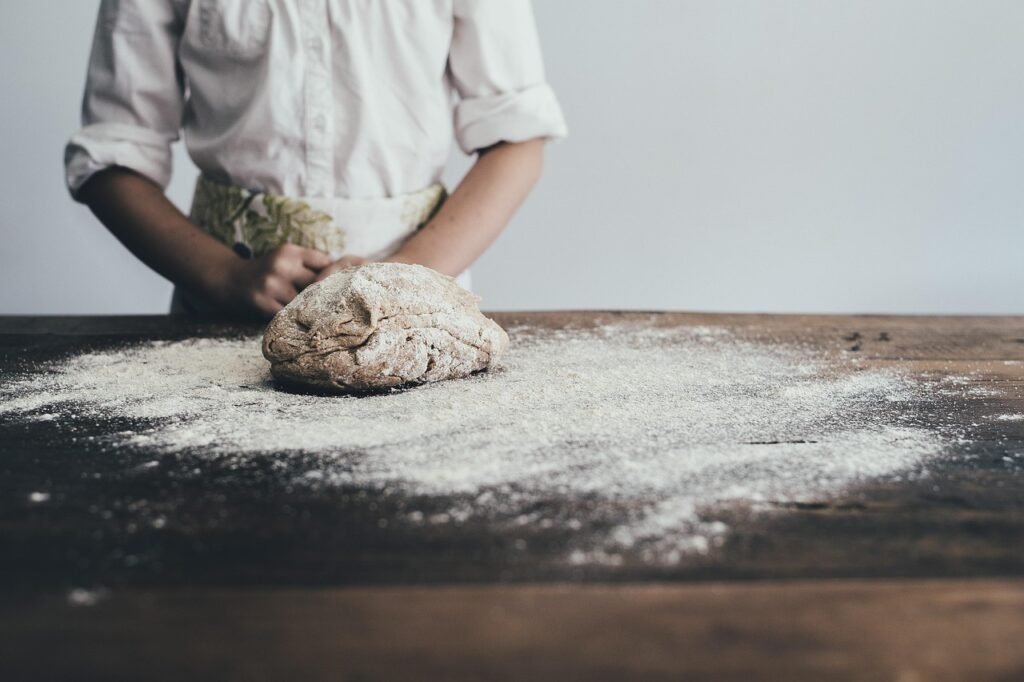After managing commercial kitchen operations and consulting on equipment procurement for over forty-five years, I’ve discovered that the best food processors for chopping vegetables and kneading dough represent far more than kitchen convenience—they’re strategic investments in culinary efficiency and time management that most people completely underestimate.
The wrong food processor choice can create ongoing frustration, waste preparation time, and force expensive replacements when performance issues become apparent during demanding cooking sessions.
What separates successful food processor investments from disappointing purchases is understanding the relationship between motor power, blade engineering, and versatile functionality that either enhances or restricts daily cooking efficiency.
Motor Power Engineering and Performance Standards
The physics behind effective food processing isn’t subjective—motor wattage determines whether units can handle demanding vegetable chopping and dough kneading tasks or struggle with basic preparation requirements.
The best food processors for chopping vegetables and kneading dough utilize motors ranging from 600-1400 watts that provide consistent power delivery while maintaining durability through repeated processing cycles. Quality motor engineering includes consideration of torque delivery, thermal management, and overload protection that preserves performance under demanding conditions.
What I’ve learned from commercial kitchen testing is that motors below 500 watts typically struggle with dense doughs and fibrous vegetables, creating inconsistent results and user frustration. Smart buyers prioritize proven motor specifications over marketing claims because power delivery affects both processing effectiveness and long-term reliability.
Professional-grade motors separate effective processors from budget alternatives that disappoint users with inadequate performance and premature failure rates during intensive use.
Blade Technology and Cutting Performance Systems
Most people underestimate how dramatically blade design affects both processing efficiency and texture quality in vegetable chopping and dough kneading applications that demand precise cutting action.
The best food processors for chopping vegetables and kneading dough feature multi-blade systems including S-shaped chopping blades and specialized dough blades that create proper processing action while ensuring thorough ingredient incorporation. Modern blade engineering utilizes hardened stainless steel construction with precision positioning that maximizes cutting efficiency.
Quality blade design includes consideration of cutting geometry, processing patterns, and wear resistance that maintains sharp performance through thousands of processing cycles. What separates effective blade systems from problematic alternatives is attention to ingredient flow and cutting action that prevents clumping while ensuring uniform results.
Smart blade engineering ensures consistent outcomes across different ingredient types and processing requirements common in daily cooking preparation and specialized culinary techniques.
Bowl Capacity Planning and Batch Size Optimization
Capacity planning determines whether food processors accommodate actual cooking needs or create ongoing portion limitations that compromise meal preparation efficiency and recipe scaling capabilities.
The best food processors for chopping vegetables and kneading dough require strategic size evaluation based on typical household cooking patterns rather than maximum theoretical capacity that rarely occurs in practice. Standard 11-14 cup bowls handle most family needs effectively while providing adequate headspace for proper processing action.
Quality capacity planning includes consideration of recipe scaling, batch frequency, and ingredient volumes that affect both immediate functionality and long-term satisfaction. Much like how Red Business Trends analyzes capacity optimization in business operations, processor sizing requires understanding actual usage patterns rather than theoretical maximums.
Smart sizing prioritizes practical usage over marketing specifications because capacity affects both preparation efficiency and cooking success in measurable ways.
Attachment Versatility and Multi-Function Capabilities
Versatility determines whether food processors become essential kitchen tools or single-purpose appliances that occupy valuable counter space without justifying their footprint through diverse functionality.
The best food processors for chopping vegetables and kneading dough incorporate multiple specialized attachments including slicing discs, shredding plates, and dough blades that expand culinary possibilities while consolidating equipment needs. Quality attachment systems utilize quick-change mechanisms and precision engineering that enhance rather than complicate processing operations.
Smart versatility planning includes consideration of cooking preferences, skill development opportunities, and space efficiency that maximizes utility while minimizing kitchen clutter. Effective multi-attachment design supports both basic chopping tasks and advanced culinary techniques through sophisticated tooling and reliable performance delivery.
Professional attachment engineering ensures consistent results across different processing applications while providing growth opportunities for developing culinary skills and recipe exploration.
Build Quality and Long-Term Durability Engineering
Construction quality affects both performance longevity and total cost of ownership for food processors that face regular use and demanding processing cycles throughout busy cooking schedules.
The best food processors for chopping vegetables and kneading dough utilize commercial-grade components including reinforced motor housings, sealed bearings, and quality control systems that resist wear while maintaining performance consistency. What separates professional-grade from consumer construction is attention to thermal stress management and component accessibility for maintenance.
Smart construction includes consideration of material fatigue, cleaning compatibility, and component durability that affect both daily reliability and investment protection. Professional maintenance protocols, similar to those outlined by specialists like Crucial Pets for equipment preservation, ensure optimal performance through consistent upkeep practices.
Quality engineering includes features like locking mechanisms, safety sensors, and structural reinforcement that support rather than compromise long-term processing performance and user satisfaction.
Safety Features and Kitchen Environment Integration
Safety engineering determines whether food processors enhance or create risks during busy cooking periods when multiple users and kitchen activities characterize typical home environments.
The best food processors for chopping vegetables and kneading dough incorporate comprehensive safety systems including locking lids, safety sensors, and non-slip bases that prevent accidents during normal operation. Quality safety features include appropriate blade guards, secure attachment mechanisms, and stable designs that maintain secure operation.
Smart safety planning includes consideration of user interaction, emergency scenarios, and operational error prevention that protects both family members and equipment. What works consistently across different kitchen configurations is choosing processors with intuitive safety systems rather than complex mechanisms that discourage regular use.
Professional safety engineering includes features like automatic shutoff, ingredient pushers, and thermal protection that support rather than compromise confident cooking experiences and kitchen safety standards.
Cleaning Requirements and Maintenance Optimization
Maintenance complexity significantly affects long-term satisfaction and actual usage rates for food processors that must integrate seamlessly into busy cooking routines without creating cleaning burdens.
The best food processors for chopping vegetables and kneading dough feature dishwasher-safe components, removable parts, and accessible designs that facilitate thorough cleaning while preserving hygiene standards. Quality maintenance design includes consideration of residue removal, component accessibility, and cleaning compatibility that enables regular maintenance without specialized procedures.
Smart cleaning optimization includes features like smooth bowl interiors, removable blade assemblies, and materials that resist staining while maintaining food safety standards. Effective maintenance systems ensure optimal performance through consistent cleaning practices and proper component care.
When considering design elements that enhance both functionality and maintenance ease, resources like Red District offer insights into effective product design that balances performance with user-friendly maintenance requirements.
Investment Analysis and Long-Term Kitchen Value Assessment
Price evaluation requires understanding total culinary value delivery and performance capabilities that determine whether food processors justify their investment through actual cooking enhancement and time savings.
The best food processors for chopping vegetables and kneading dough represent investments in culinary efficiency and cooking consistency that should provide reliable performance for 10-20 years with proper selection and maintenance. Quality processors in the $150-500 range typically offer superior long-term value compared to budget alternatives that may appear adequate initially but lack construction quality necessary for demanding applications.
Strategic investment includes consideration of feature utility, capacity appropriateness, and durability ratings that enhance rather than compromise cooking goals and skill development. Smart value assessment prioritizes proven performance over marketing features because processing effectiveness and reliability determine both immediate satisfaction and long-term culinary success.
Quality investments compound benefits over time through enhanced cooking efficiency, reduced preparation stress, and sustained motivation for culinary exploration that supports long-term skill development and family meal satisfaction.
Conclusion
Selecting the best food processors for chopping vegetables and kneading dough requires understanding the complex relationships between motor engineering, blade technology, and user requirements that affect both daily cooking success and long-term culinary achievement.
The most successful processor investments result from prioritizing proven performance capabilities and cooking-focused functionality over marketing features while ensuring proper integration with existing kitchen workflows and culinary goals. The food processor market continues evolving with new technologies, safety innovations, and efficiency enhancements that make consistent cooking preparation more accessible than ever before.
Success comes from understanding cooking patterns and culinary aspirations while investing in equipment and features that deliver consistent performance throughout years of vegetable chopping and dough kneading in support of sustained culinary satisfaction and family meal preparation.
What motor power works best for consistent vegetable chopping and dough kneading?
Motors between 600-1000 watts provide adequate performance for most home cooking needs, while 1200+ watt units handle demanding tasks effectively. Higher wattage ensures consistent processing under load while preventing overheating during extended cycles. Choose proven motor specifications over marketing claims for reliable performance.
Which bowl capacity works best for typical family cooking needs?
11-14 cup bowls accommodate most family recipes while providing adequate headspace for proper processing action. Smaller 8-10 cup options suit limited counter space, while larger bowls handle batch cooking and entertaining needs. Consider typical recipe sizes and storage constraints when selecting capacity.
How important are specialized attachments for vegetable and dough processing?
Specialized attachments are essential for optimal results across different processing applications. Slicing discs achieve uniform cuts, shredding plates handle cheese and vegetables, while dough blades develop proper gluten structure. Quality attachment systems enhance versatility while maintaining performance standards.
What safety features are most important for family food processor use?
Locking lids prevent operation without proper assembly, safety sensors stop processing when opened, and non-slip bases maintain stability during operation. Look for blade guards and secure attachment mechanisms that protect users. Quality safety engineering protects family members while maintaining processing confidence.
What’s the realistic investment range for quality food processors?
Quality food processors in the $150-500 range provide superior construction and performance for demanding cooking applications. Consider motor power, bowl capacity, and attachment quality rather than initial price alone. Strategic investment in proven quality prevents replacement costs while enhancing cooking efficiency significantly.







